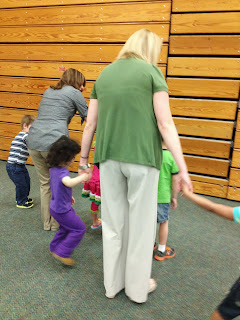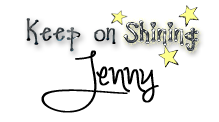Here comes this kiddo who is having a tough time and there are many reasons why this could be happening. It could be due to sensory issues, a rough morning at home, not enough sleep, hunger, being yelled at, communication delays, and the list of possibilities goes on and on. The truth is, we don't always know WHY they are behaving the way they are, but there are certainly some things we can do to help them prepare their bodies for learning.
I'm dating myself now, but waaaaaay back in the mid 90's when I first started teaching, I was intrigued by a workshop I attended about sensory integration. I was so interested in the results they were getting with children by addressing their sensory needs. I tried some of the techniques in my classroom and immediately saw a difference. Honestly, the biggest difference I saw was a shift in my perspective on behavior. These sensory integration techniques gave me new tools to help my students. I began to see that excessive movement or aggression could potentially be caused by unmet sensory needs.
This past school year, I had a little girl in my three-year-old class who would come to me in an upset state frequently. I found myself expecting her to come into the classroom and be ready to connect with me and follow the arrival routine without first addressing her internal state. At a conference last spring I heard Dr. Becky Bailey say, "If a child comes to you in an upset state, why would you let them in the door?" Well, we certainly aren't going to keep children in the hallway until the "get happy", so we have to come up with some other ideas. Since state dictates behavior I knew I needed to be more intentional about changing her internal state.
In our school, we use a program called Minds-in-Motion. This program uses a series of movement activities set up in a maze that students go through in about 15 minutes daily. This program is designed to stimulate a child’s VISUAL processing, AUDITORY processing, as well as their MOTOR skills. The outcome is a better integrated and balanced child who will perform better in school and at home.
We decide to begin going to the maze every morning as soon as the children arrived. We didn't even take off our coats and backpacks. We gathered the children at drop off and headed straight for the maze. Now my whole class {including the teachers} had the opportunity to disengage their stress and regulate their upset through organized movement. What started out as a plan to help one child get ready to learn, ended up benefiting everyone!
You know me, I can't leave well enough alone. I have to add a Conscious Discipline twist to learning as often as I can. ;) So, instead of sticking strictly to the maze plan, I modified it to make sure it included connecting activities and met the developmental needs of my students with special needs. Here are some pictures of us doing the maze.
We start by doing Wall Push-ups. We push with our hands, backs, heads, and feet. I tell students we are going to try to see if we can move the wall. We also count forward and backward as we push. A great opportunity to create a pattern and squeeze in some academic skills.
We call this exercise the Electric Slide. It's basically a side step, but instead of stepping, you slide your foot. Older children are able to do it independently, but most of our three-year-olds needs some help organizing their bodies. By holding hands we are also boosting this opportunity to connect with children through the sense of touch.
The Log Roll is usually a huge favorite! For this exercise we play the Hotdog Game from Dr. Bailey's book, I Love You Rituals. The child lays down on the mat and pretends to be the hotdog or burrito. Then the teacher or another student pretends to add toppings to the hotdog. We make lots of funny noises and movements and enjoy this playful time before the hotdog rolls away across the mat!
Climb Every Mountain can be a very challenging movement for preschoolers. The challenge is to lift one leg all the way over the obstacle while balancing on the other leg. We really encourage children to complete this movement as independently as possible as it is designed to really strengthen their balance and core strength.
The Puppy Dog Crawl helps children cross the midline. We like doing it on a line to give children a visual to help them cross their hands over properly. In this exercise, children crawl in various directions while making x's on the floor with their hands.
It is a joy to watch the children push themselves and increase their skills over the course of the school year. The Balance Board has taught us many lessons in communication, connection, and focus. We sometimes hold a hand or two to help children feel safe. This is also an opportunity to practice calming techniques as this can be a bit scary for little guys.
You don't have to do a maze to help children regulate their state and disengage the stress from their morning. I have also found great success in using Calming Cream to address sensory needs. I buy a cheap bottle of lotion and a pump from the Dollar Tree. Put a small amount of lotion on your hands and rub it on the child's hands while singing a song or making a game out of it.
Here is an example of a song you can sing:
Bye, Bye Crankies
Bye, Bye, Crankies
Bye, Bye Crankies
It's time for you to go.
We also have an adapted bike that we could use to take children on a bike ride around the school. One of our classroom jobs is the milk helper. This child would push a small cart that was filled with blocks down to the cafeteria to collect the milk for the day. This gives the milk helper an opportunity to get in some heavy work, organize their bodies, and be helpful! It is very important that you include organized movement patterns as well as opportunities for free movement {think recess or dancing}.
Who knows what an Underdog is? When I was a kid we loved getting underdogs on the swing because it was such fun. I have had several students who respond very well to swinging to address their sensory needs. For an underdog I get behind them and push them forward as I go under the swing. They love that dropping feeling as they swing back and forth with a little extra boost. Once I get started giving Underdogs it's hard to stop, but I'll tell you what, I will have those children "eating out of the palm of my hand" when we're finished. ;) It's worth a little extra physical exertion on my part!
I'll leave you with this...
My bloggy friend, Amy, over at One Artsy Mama shared this photo from her son's new school. When she questioned the administrator about why they have a slide in the school, the administrator said, "Because, school should be joyful." They really have the right idea! We have been called to design learning opportunities for children that bring them pure joy! Why would we want anything short of that?
The next time a child arrives at your door in an upset state, consider how you might address their need for organized movement to help them change their state and get them ready to learn.

















No comments:
Post a Comment